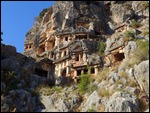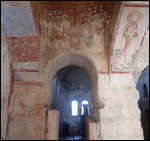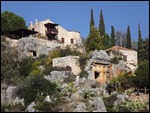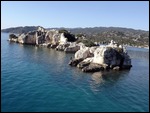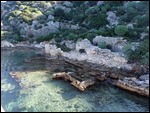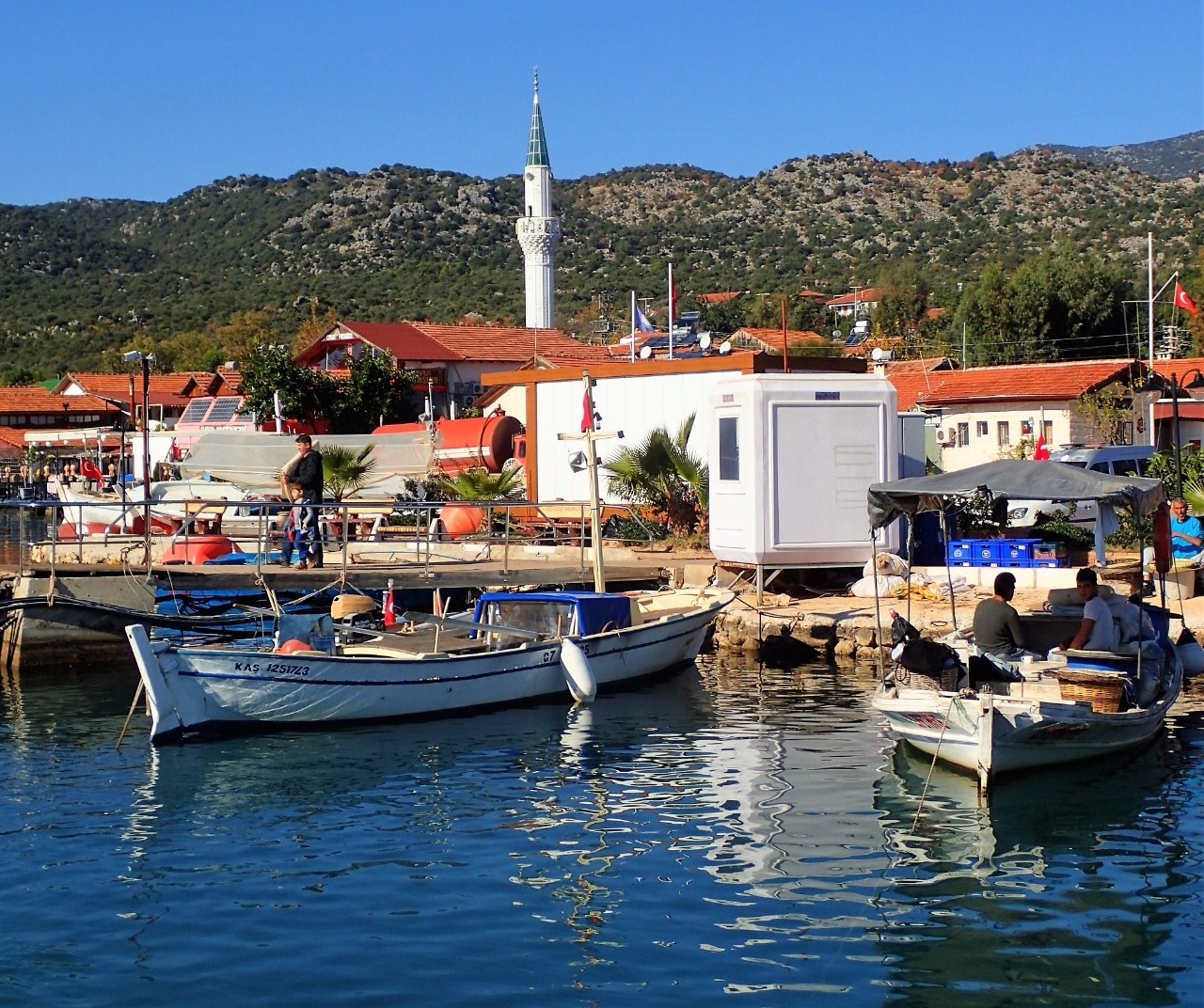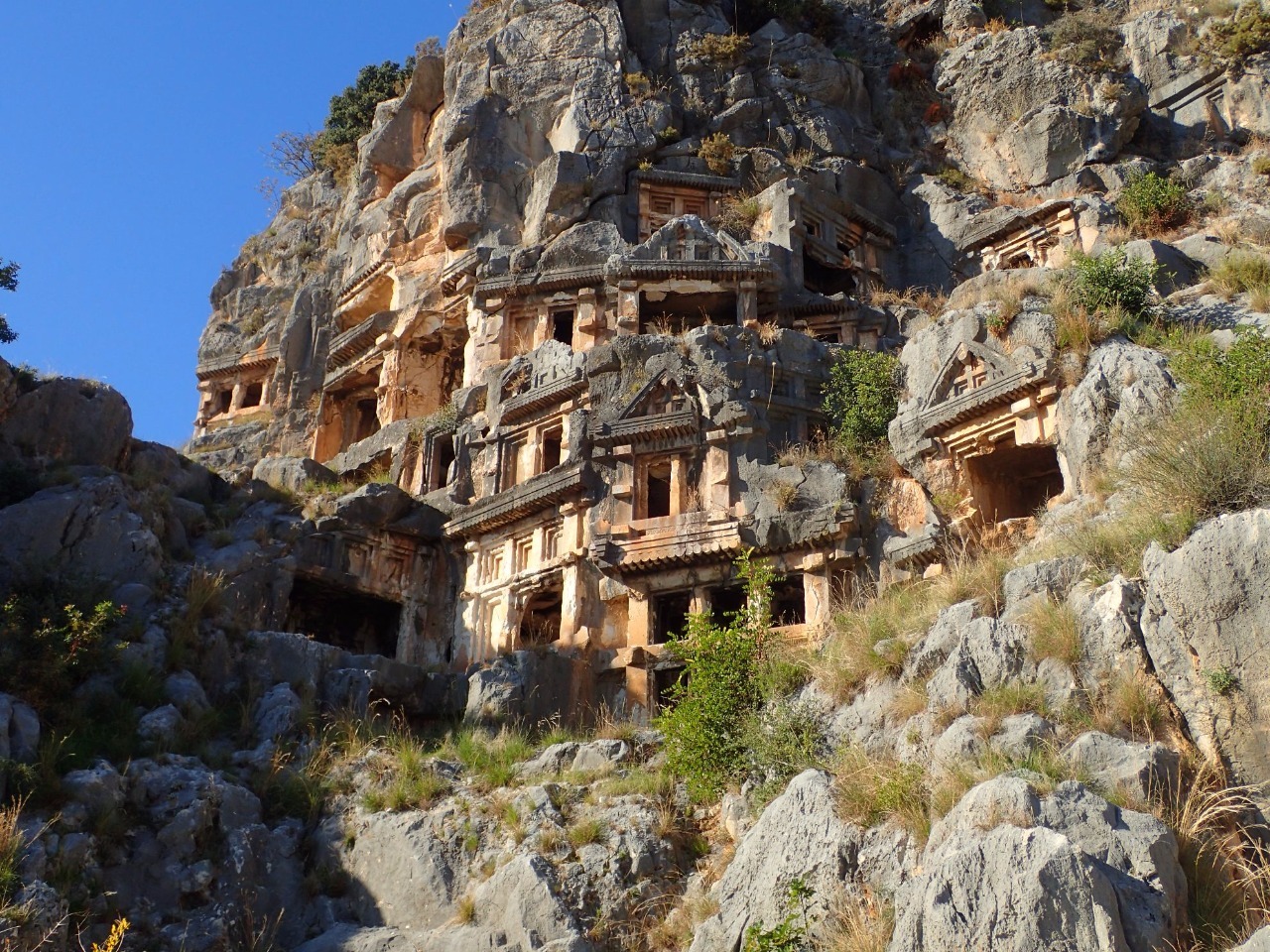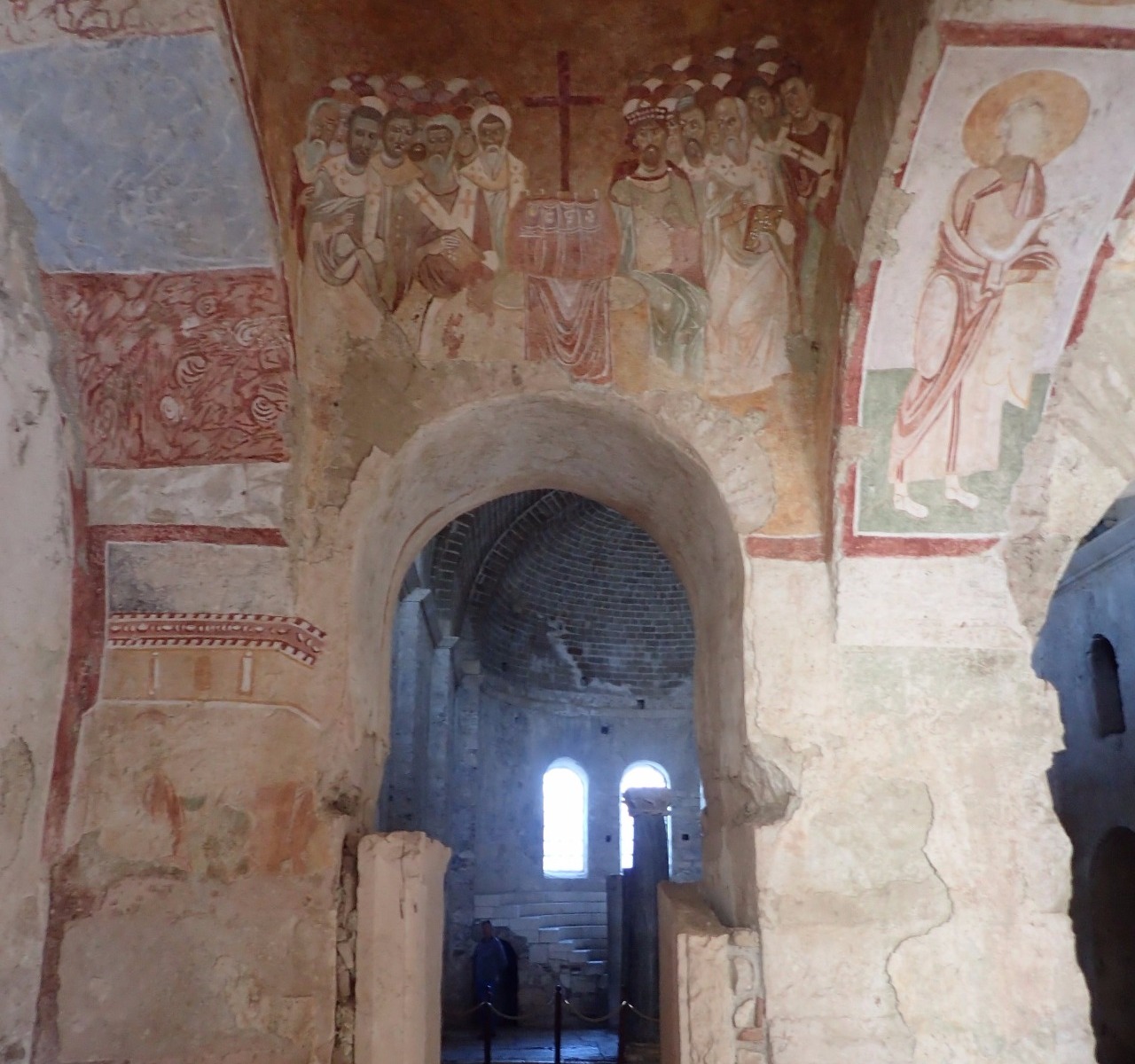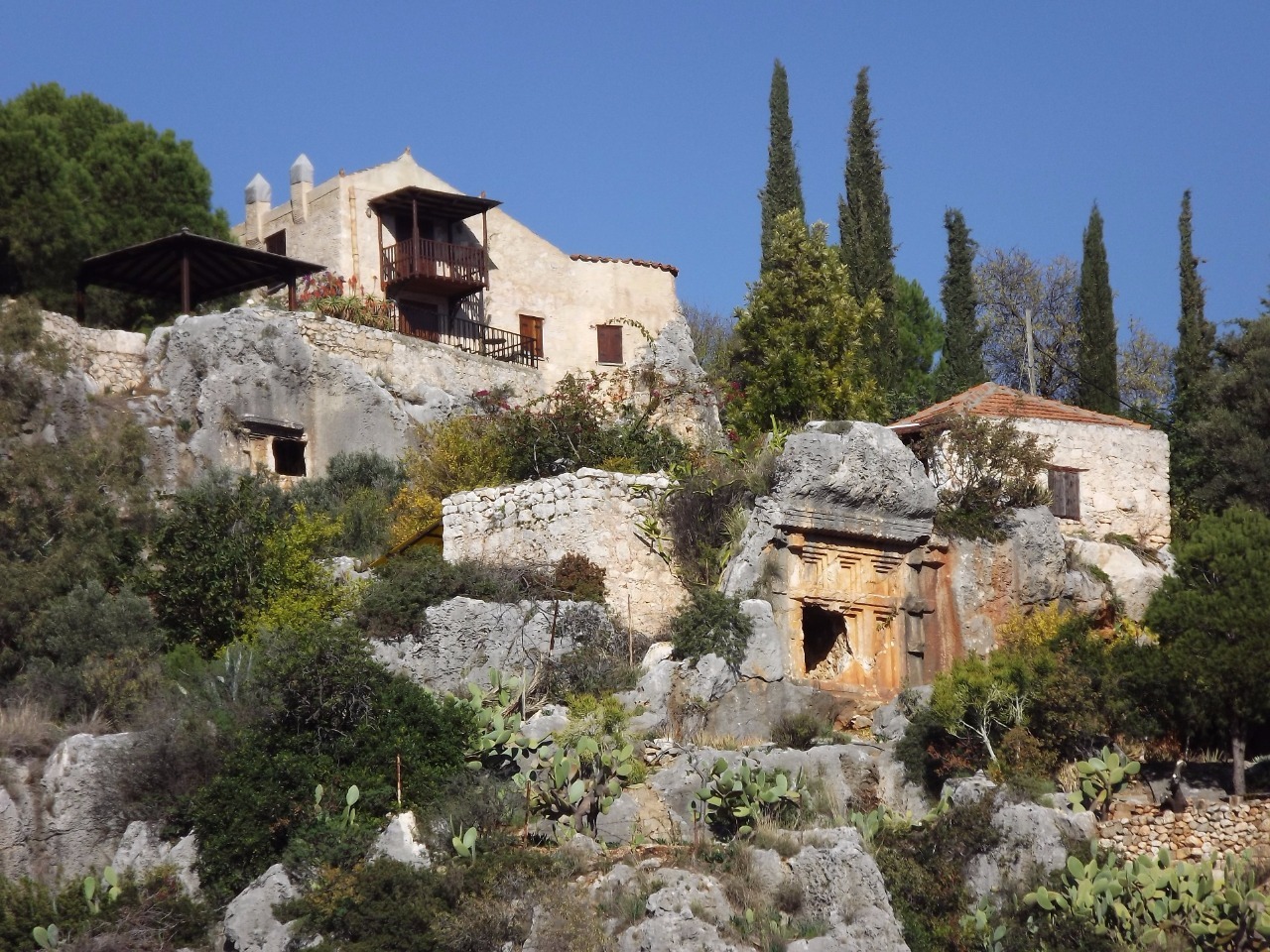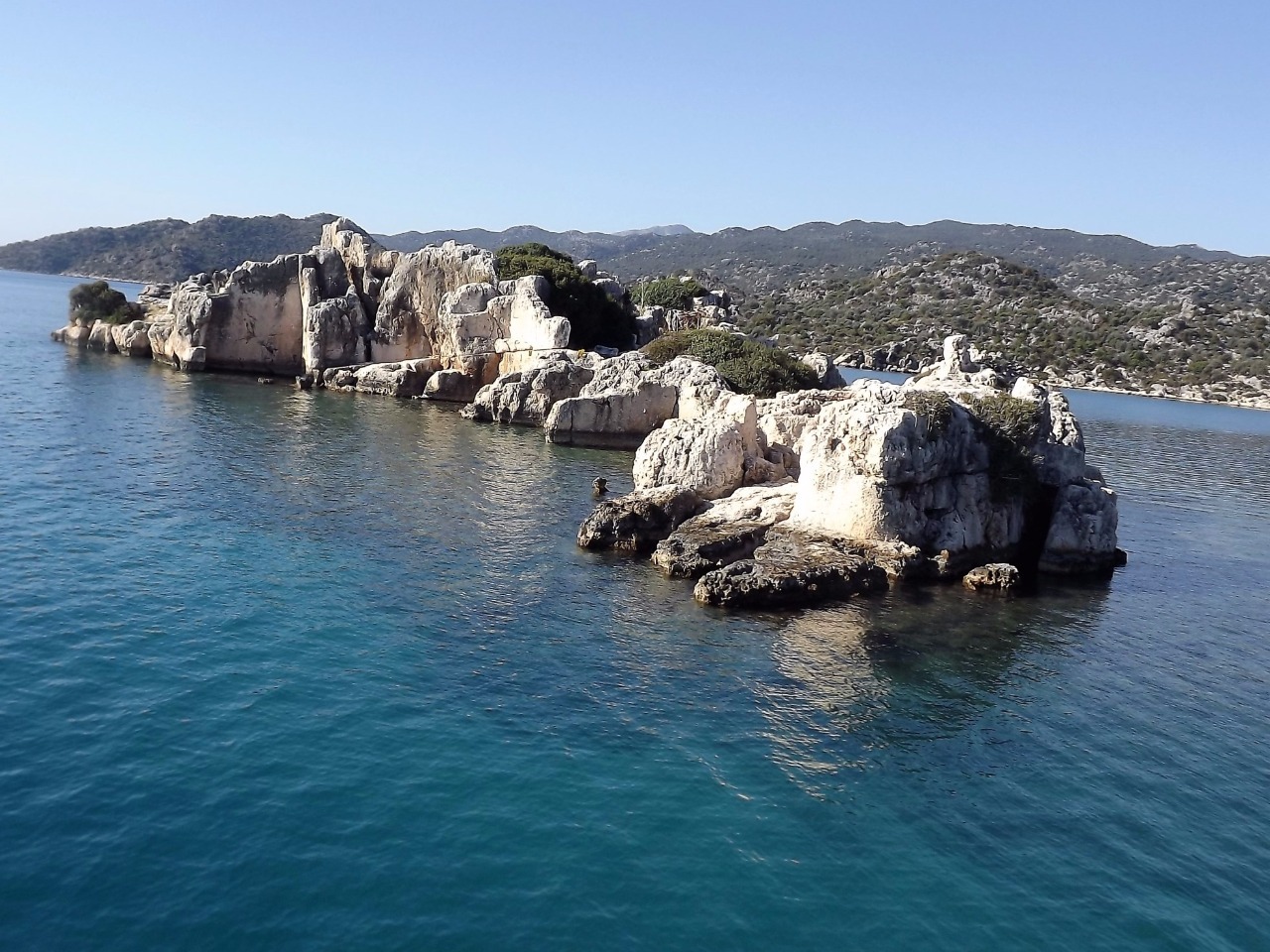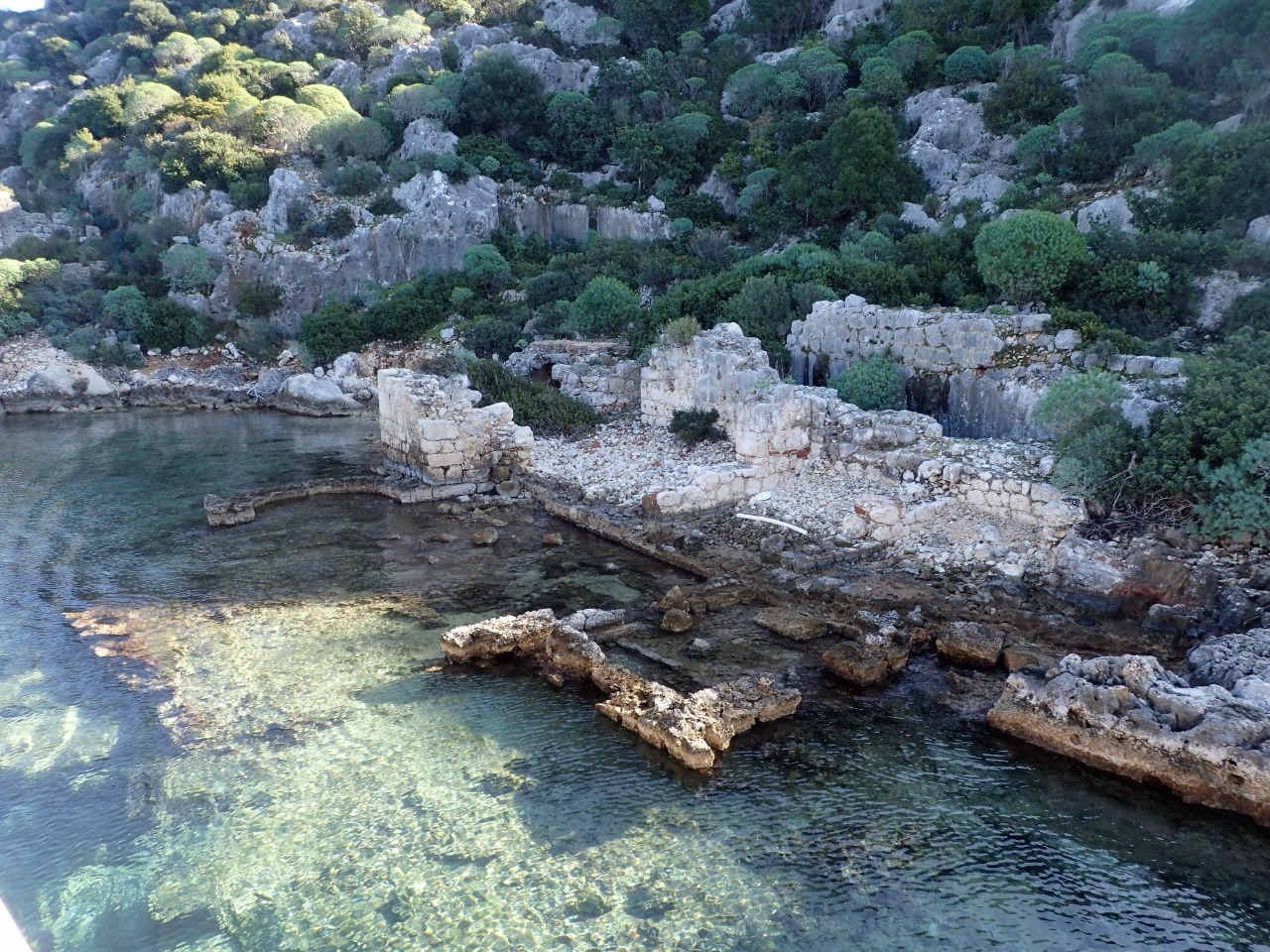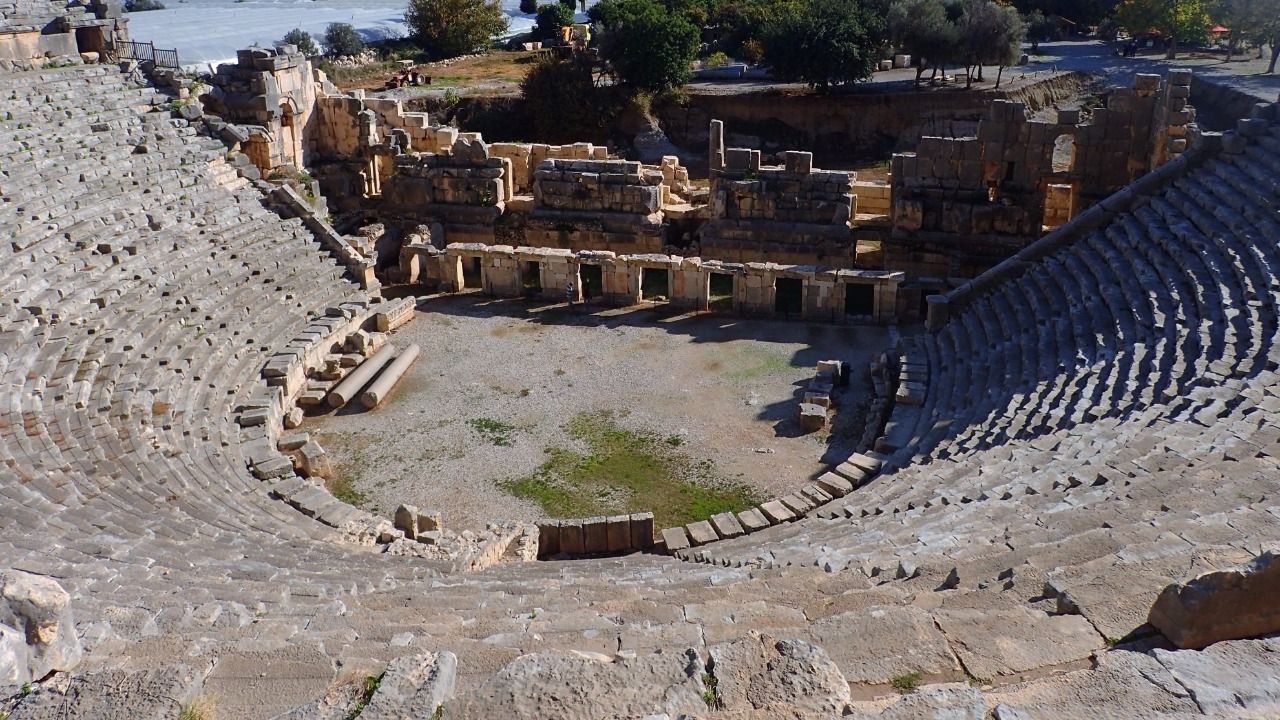To see the rest of our photos, visit my Flickr album here.
Neil and I took a day tour from Antalya to the Lycian Coast to the west. The Lycian Coast is a rugged coastline historically populated by a distinct Lycian people. They had their own language and alphabets before Greek became the lingua franca in the pre-Islamic era. Since Lycia was relatively inaccessible and economically unimportant, it was seldom conquered by force. Their picturesque Mediterranean fishing villages whose hills honeycombed with rock-cut tombs have hardly changed since the iron age.
Probably because it was low season for guided bus tours, we were put into a German language group, but our guide Mustafa resolved this error by speaking English to us and German to the rest of the group. Mustafa told us about his own fascinating mixed heritage between a Crimean tartar father and a Turkish mother. Crimean tartars are a group of Asiatic nomads descended from the Mongolian hordes who lived in Crimea - the peninsula in the Black Sea disputed between Ukraine and Russia. Furthermore Crimean tartars were exiled to Siberia by Joseph Stalin and only returned to Crimea in recent decades. Mustafa looked half Asian and half European; he grew up in Germany and could speak Russian, German, English, and Turkish.
Our bus drove along the Mediterranean coastline westward, approaching the snow-capped Mount Olimpos (a sub-range of Taurus Mountains) and winding along many rugged sea coves, eventually reaching a picturesque fishing port Ucagiz. The port was filled with beautiful yachts and fishing boats; the placid waters off shore lazily reflected the winter sun. We got off the bus and boarded a fishing boat, heading toward the "sunken cities" of Kekova - a UNESCO World Heritage site. These were ancient Lycian cities destroyed by earthquakes that sunk into the shallow bay of Kekova. We could see ruined walls and rooms appearing above water on small islands, and stone walls under the clear shallow water beneath our boat. Via a glass window at the bottom of the boat, we could even see ancient pottery shards. As the boat approached Kekova Island, a ruined Roman bath was clearly visible at water level. Also on the island Mustafa pointed out a Christian church marked by a small cross symbol on the doorway. Stair steps carved in solid rock lead uphill to more ruined houses. Where the land had not sunken, there were ancient rock-cut tombs side by side with today's houses and small hotels up on the hill, beneath a modest Byzantine fort. Besides viewing the ruins, it was a delight to take in the beautiful winter light shining on the scattered islands and the translucent bay waters from the boat.
After a simple lunch we headed to the Myra ruins - an ancient Lycian city with a spectacular collection of rock-cut tombs, as well as a well-preserved Greek theater. Although climbing the rock-cut tombs was not allowed, we were able to climb to the top of the theater seats and get a good view of both. The rock-cut tombs made a whole hillside into a honeycomb; most were fairly simple design of rectangular shapes, thus must have been tombs of common people; others were a bit grander with added triangular pediments. The Greek theater was monumental as usual, constructed using huge limestone blocks and decorated with carved relief. A few shops nearby sell T-shirts, fresh-squeezed juices, souvenir tea sets, etc.; a shop selling Orthodox Christian icons was not open for business. Some shopkeepers here look distinctly Greek, may have been the direct descendants of the ancients who lived here (not very likely but possible in remote villages like this).
Our final destination of the day was St. Nicholas' church in Demre, a veritable pilgrimage site for Santa Claus fans. An early Christian bishop of Myra who was known to give secret gifts, St. Nicholas' popularity is now worldwide. The ruined church was covered by a modern roof structure to shelter it from the elements. Inside the church were several sarcophagi, including that of St. Nicholas. The church followed a standard Byzantine style with brick arches and domes, whose walls and ceilings were covered by faded frescoes and icons of saints and angels. Marble mosaic floors with intricate geometric patterns were still in good condition. On the nearby street the shopping was dominated by Byzantine icons, apparently to cater to a large population of Orthodox Christian pilgrims. We were an object of curiosity once again here - an older Turk approached us to ask where we were from.

